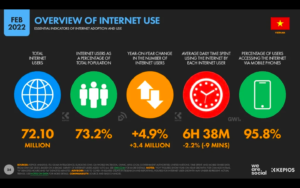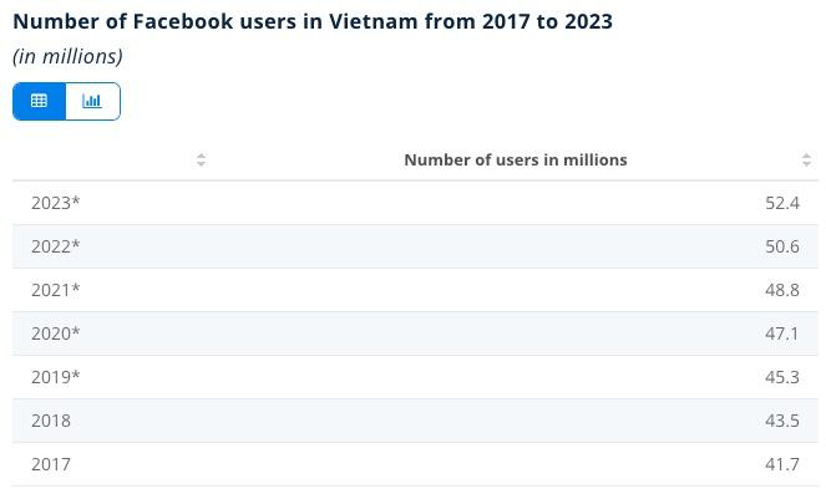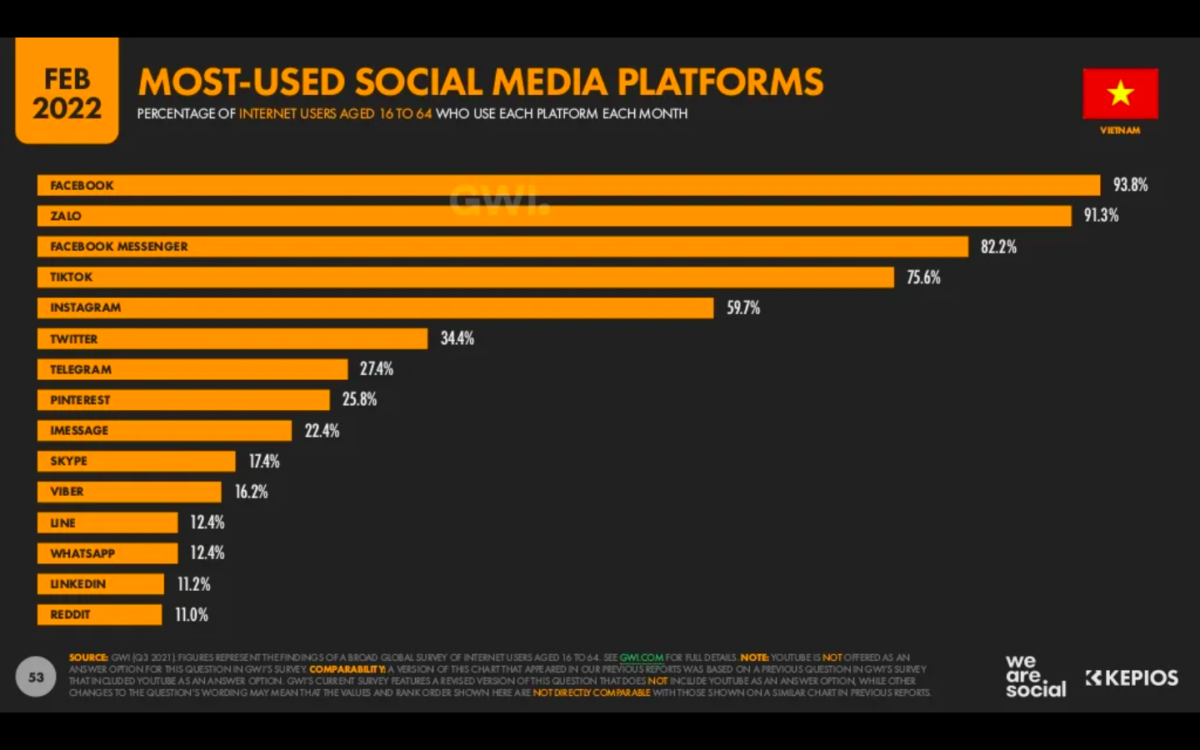Welcome to article 2/3 focused on social media penetration in Vietnam. This article highlights the importance for brands to understand how the Vietnamese use and rely on social media platforms. We’ll also explore the local Vietnamese social platforms that are replacing traditional western channels. In a market where there are lots of local players, it’s important to remind yourselves to take a step back and remember what is core to the success of your campaign – your audience and what makes them tick. A brand will only succeed with a strong understanding of the market and its audiences.
To elevate our knowledge and conduct better campaigns for our clients, Digital Business Lab decided to partner with Dr Crystal Abidin (PhD in Anthropology & Sociology, and Media Studies) and conduct deep research in Singapore, Indonesia, Vietnam, and Thailand. Dr Crystal Abidin specializes in influencer cultures, online visibility, and social media pop culture, especially in the Asia Pacific region.
For this series about Vietnam, we will dig deeper into a country that is known for its beaches, bustling cities, and Buddhist pagodas. A place that offers some of the best street food in the world, from bun ca to pho. Of course, the greatest asset of Vietnam is its people. Regaining independence and sovereignty in 1975 after the Resistance War, Vietnam is no longer associated with loss and pain. After more than 40 years of independence, Vietnam has taken on a different face, a face of courage, openness, and creativity.
Social Media User Penetration in Vietnam
- There were 76.95 million social media users in Vietnam in January 2022.
- Data showed that social media users in Vietnam increased by 5.0 million between 2021 and 2022.
- Individuals using the internet increased from 30.7% in 2010 to 70.3% in 2018 (The World Bank, n.d.), but there is still some digital divide as social media use is concentrated on the “highly educated and urban-based populations” (Bui 2016, Kurfürst 2015)
💡 Takeaway: Vietnam is an emerging market and one where there is a huge pool of potential people to tap into. With the majority of those accessing social media based in urban areas, brands should have this in the back of their minds when ideating and executing campaigns.
 Full Digital 2022 Report for Vietnam
Full Digital 2022 Report for Vietnam
- Facebook is the most popular social media in Vietnam (2022), especially for networking and for selling goods.
- Facebook Messenger’s ad reach in Vietnam is estimated to be the equivalent to 74.9% of the populations internet users.
- In early 2022, it was recorded that 50.8% of Facebook Messenger’s ad audience in Vietnam was female, while 49.2% was male.
💡 Takeaway: Those looking to target the 18-34 year old age ranges in Vietnam can’t ignore the impact that a Facebook campaign could have. As well as the behaviour pattern that this age group is familiar with online shopping. Running online sales campaigns, through organic, paid and Influencer could be particularly successful in this market.

Number of Facebook users in Vietnam from 2017 to 2023 (Doan 2020a)
- The Information Minister has encouraged local Vietnamese firms to “create viable domestic alternatives to foreign social media platforms which are more difficult for the government to control” (Reuters 2019), and the Information Ministry is aiming for 50% of its social media users to use “domestic social networks” by 2020, and to prevent “toxic information on Facebook and Google” (Reuters 2018)
💡 Takeaway: It’s likely we’ll see a change in social media penetration and a shift in the popularity and usage of western platforms in Vietnam, such as Facebook. Brands should be aware of this when creating their long-time social media strategy in Vietnam, to make sure local platforms are incorporated. This will be particularly important as part of your paid strategy.
 Full Digital 2022 Report for Vietnam
Full Digital 2022 Report for Vietnam
- Services such as Skype, VIber, and Zalo have replaced traditional voice calls and SMS services, and mobile app messaging has overtaken traditional SMS services. As such, many network operators, such as Viettel and VNPT, have begun to offer their own apps and services (Data61 2019).
💡 Takeaway: The Vietnamese audience is familiar with messaging apps and here is where they communicate with their peers and colleagues. With Zalo also being the 3rd most popular social media platform in Vietnam, messaging app needs to be part of your social media strategy!
- Citizens tend to use social networks rather than search engines to look up online advertising and information, with most advertisers being enterprises, household businesses, and individual entrepreneurs/sellers (Data61 2019)
💡 Takeaway: It’s important for brands to understand how the Vietnamese use and rely on social media platforms. Unlike western countries, where search engines, such as Google are used to find products/services and information, the Vietnamese use social platforms, such as Facebook to do this. This shows that brands should not rely too heavily on paid campaigns on search engines e.g.Google, but should look to invest more heavily in paid campaigns on social platforms.
- Most internet users are “young, urban, educated and middle class”, who particularly enjoy that the authority of older generations is reduced online. (Bui 2016)
💡 Takeaway: With most internet users forming part of the younger generation in Vietnam, brands must be aware of their purchasing power, as well as disposable income when they look to market their product/service to this country.
Explore article 1 & 3 of this series:
- ① Cultural social media insights in Vietnam [ Research ]
- ③ The popular Social Media in Vietnam [ Research ]
Explore our other Market Research in Asia:
- ① Cultural social media insights in Singapore [ Research ]
- ② Social media marketing in Singapore [ Research ]
- ③ Online marketing in Singapore [ Research ]


